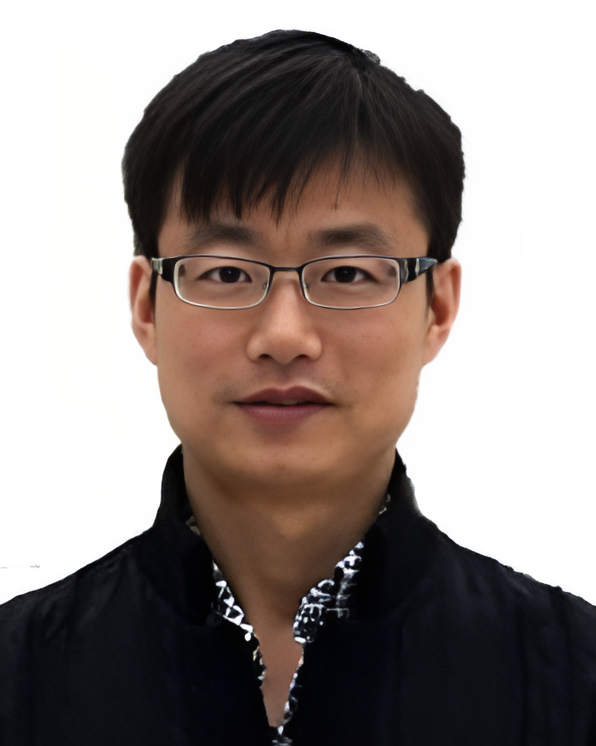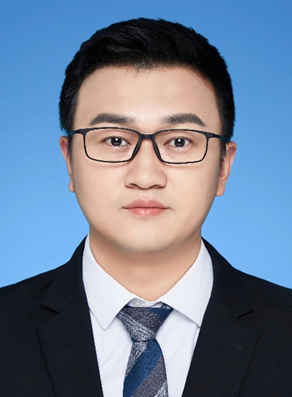Prof. Feng DingJiangnan University, China Biography: Ding Feng, a native of Guangshui, Hubei Province, is a professor and doctoral supervisor. Being an alumnus of Hubei University of Technology, he recievd a Ph. D. from Tsinghua University and served as a postdoctoral fellow and researcher at the University of Alberta, Canada. He has been appointed as a Chutian Scholar Lecture Professor in Hubei Province, Taishan Scholar Distinguished Professor in Shandong Province, and Zhishan Distinguished Professor at Jiangnan University. With 428 SCI publications cited 207,684 times in SCI journals (including 35 ESI Highly Cited Papers), he has led 7 National Natural Science Foundation of China Programs and received 7 provincial / ministerial-level first/second prizes for scientific achievements. He proposed and pioneered Auxiliary Model Identification Idea, Multi-innovation Identification Theory, Hierarchical Identification Principle, Coupled Identification Concept, Filtering Identification Methodology. His seminal works include China’s first systematic monograph New Perspectives on System Identification and Modern Control Theory, along with five volumes of the System Identification Monograph Series. Title: Models and Algorithms Abstract: Professor Ding Feng of Jiangnan University (Engineering and Mathematics)--Recognized as a Thomson Reuters/Clarivate Analytics ESI Highly Cited Scientist in Engineering and Mathematics for five consecutive years. Leveraging his 14 years of academic experience at Tsinghua University, 5 years of overseas research, and over two decades of mentoring doctoral and master’s students at Jiangnan University (co-authoring 428 SCI papers), Professor Ding will briefly introduce the latest research advances in system identification models and algorithms. This talk includes Auxiliary Model Identification Idea, Multi-innovation Identification Theory, Hierarchical Identification Principle, Coupled Identification Concept, Filtering Identification Methodology. The presentation will also explore the origins of scientific thinking and the wellsprings of innovation within these frameworks. |
Prof. Zhangqing HeHubei University of Technology, China Biography: Dr. Zhangqing He received his M.Sc. and Ph.D. degrees in Electronic Engineering from Huazhong University of Science and Technology, China. His research focuses on integrated circuit design and hardware security. Dr. He has led over 10 major research projects, including the National Key R&D Program, National Natural Science Foundation projects, and Hubei Provincial Natural Science Foundation grants. He has authored more than 20 publications in premier IEEE journals such as IEEE Journal of Solid-State Circuits (JSSC), IEEE Transactions on Information Forensics and Security (TIFS), and IEEE Transactions on Circuits and Systems I (TCAS-I), and holds 15 invention patents. He serves as a reviewer for multiple IEEE transactions, including TCAS-I and TVLSI. His academic distinctions include First and Second Prizes in the Hubei Provincial Teaching Achievement Awards (1 first prize, 2 second prizes), and editorship of a nationally planned textbook. Title: Chip-PCB Hybrid PUF for Hardware System Tamper Detection Abstract: This report introduces a novel "Chip-PCB" hybrid Strong Physical Unclonable Function (CPS PUF) that combines custom PCB-printed RC circuits with an on-chip delay-based strong PUF in a unified and inseparable structure. This integrated design generates exponentially unclonable responses by capturing the unique fingerprint characteristics of the Chip-PCB hybrid system. Consequently, it provides robust protection against physical tampering attacks on chip and Printed Circuit Board (PCB). To ensure the reliability and unbiased features of the generated responses, self-testing and mismatch compensation schemes are implemented. FPGA and ASIC tests show that CPS PUF offers the following advantages, including: protection against desoldering and depackaging of ICs, PCB tampering and counterfeit detection, exponential reliability with unbiased responses, minimal chip I/O port usage, and system-level remote authentication. |  |
 | Assoc. Prof. Jianguo ZhouWuhan University, China Biography: JIANGUO ZHOU was born in 1965. He received the B.Eng. degree in computer and automation with Sichuan University, China, in 1988, and the M.Eng. degree in radio electronics and the Ph.D. degree in communication and information systems from Wuhan University, China, in 1991 and 2013, respectively. He is currently an Associate Professor with Wuhan University. He serves as a Senior Member of the China Institute of Communications. His research interest includes computer networks,wireless Communication and the spatial information networks. He has authored over 50 papers in different journals and conferences. Title: Research on Efficient Inference Methods for On-Device Large Language Models Abstract: With the continuous advancement of artificial intelligence, Large Language Models (LLMs) have demonstrated exceptional capabilities in language understanding and generation within the field of natural language processing. However, their massive parameter sizes and intensive computational demands pose significant challenges for traditional cloud-based inference, such as high latency, substantial bandwidth consumption, and potential risks to user privacy. As a real-time computing paradigm, edge computing holds promise for mitigating these issues by offloading parts of the inference process to end devices closer to the data source. To address the high system cost and infeasibility of executing complete LLMs on end devices, we employ a hierarchical Model Split strategy tailored to Transformer architectures. Shallow layers are deployed on end devices to enable fast response, while deeper layers are offloaded to edge servers to leverage their computational power, thereby alleviating the computational and memory bottlenecks on the device side. During collaborative inference, only intermediate feature tensors from shallow layers are transmitted, avoiding the need to send raw data and thereby reducing communication bandwidth usage.this paper proposes an efficient inference approach for On-Device Large Language Models by integrating a Model Split mechanism with Reinforcement Learning (RL) to minimize the average latency and energy overhead under dynamic wireless environments. To validate the effectiveness of the proposed method, extensive experiments are conducted using the LLaMA2-7B model and the WikiText-2 dataset,These results confirm the feasibility and efficiency of the proposed approach for On-Device LLM inference tasks. |
Assoc. Prof. Zhenghua HuangWuhan Institute of Technology, China Biography: Associate Professor Zhenghua Huang received his PhD from the School of Artificial Intelligence and Automation at Huazhong University of Science and Technology, and serves as a Master's supervisor. Engaged in long-term research work related to computer vision, led and completed one National Natural Science Foundation Youth Fund project and two Hubei Provincial Natural Science Foundation general projects, participated as a key member in one National 973 Basic Research Project, as well as multiple national defense, military, and horizontal projects (at least six). Outstanding member of the 8th and 11th batch of "Doctoral Service Teams" in Hubei Province, recipient of the third batch of "Hubei Province Youth Talent Development Plan" by the Communist Youth League Hubei Provincial Committee, and "Vice President of Science and Technology" for the second batch of talents in small and medium-sized enterprises of the Communist Party of China Hubei Provincial Committee in 2021. In the past five years, as the first author IEEE TCSVT、IEEE TGRS、IEEE GRSL、IEEE SPL、 Neurocomputing、Infrared Physics & Technology Published over 30 papers in international authoritative SCI journals such as Biomedical Signal Processing&Control, over 10 international conference papers, and authorized over 10 national invention patents. 2021 IEEE 21st International Conference on Communication Technology (ICCT 2021)、2022 IEEE 22nd International Conference on Communication Technology(ICCT 2022) Received the title of Outstanding Young Scholar at ICCT 2021 as the Chair of the 15th International Conference on Graphics and Image Processing (ICGIP 2023). Serving as a peer reviewer for internationally important SCI journals such as IEEE TIP, IEEE TOC, IEEE TNNLS, IEEE TGRS, etc. Received the first prize for scientific and technological progress from the 2021 Chinese Society of Automation. Selected as one of the top 2% global scientists in 2023. We will recruit and train 3 master's students, and each graduate student will receive at least one national scholarship for graduate studies. They will also receive the first prize of academic scholarship every year. Title: T2EA: Target-Aware Taylor Expansion Approximation Network for Infrared and Visible Image Fusion Abstract: In the image fusion mission, the crucial task is to generate high-quality images for highlighting the key objects while enhancing the scenes to be understood. To complete this task and provide a powerful interpretability as well as a strong generalization ability in producing enjoyable fusion results which are comfortable for vision tasks (such as objects detection and their segmentation), we present a novel interpretable decomposition scheme and develop a target-aware Taylor expansion approximation (T2EA) network for infrared and visible image fusion, where our T2EA includes the following key procedures: Firstly, visible and infrared images are both decomposed intofeature maps through a designed Taylor expansion approximation (TEA) network. Then, the Taylor feature maps are hierarchically fused by a dual-branch feature fusion (DBFF) network. Next, the fused map of each layer is contributed to synthesize an enjoyable fusion result by the inverse Taylor expansion. Finally, a segmentation network is jointed to refine the fusion network parameters which can promote the pleasing fusion results to be more suitable for segmenting the objects. To validate the effectiveness of our reported T2EA network, we first discuss the selection of Taylor expansion layers and fusion strategies. Then, both quantitatively and qualitatively experimental results generated by the selected SOTA approaches on three datasets (MSRS, TNO, and LLVIP) are compared in testing, generaliza tion, and target detection and segmentation, demonstrating that our T2EA can produce more competitive fusion results for vision tasks and is more powerful for image adaption. |
 | Assoc. Prof. Zhu SuCentral China Normal University, China Biography: Zhu Su, male, Associate Professor, Master’s Thesis Supervisor, has long been engaged in research in visual reconstruction, network science, data mining, learning analytics, and graph neural networks. He has an interdisciplinary academic background and several years of experience in educational research. He has presided over more than 10 research projects, including the National Natural Science Foundation of China (Youth Program), the NSFC General Program, and the Wuhan Knowledge Innovation Program. He has published over 40 papers in journals such as IEEE TKDE, Information Processing & Management (IPM), and Expert Systems with Applications (ESWA), and has been granted 3 national invention patents. He also serves as a reviewer for journals including Computers & Education (C&E), Information Processing & Management (IPM), and Knowledge-Based Systems (KBS). Title: Educational Data Mining and Learning Analytics through Network Science Abstract: This report presents research on educational data mining and learning analytics through network science. The work mainly includes the following aspects: First, by extracting data from learners’ online learning activities, a multi-layer network model is constructed to capture the essential components of knowledge structures and the underlying interaction mechanisms of learning. Second, from the perspective of network topology, the emergence mechanisms of higher-order cognitive patterns are investigated, enabling quantitative analysis of the learning process and discovery of underlying cognitive regularities. Finally, aiming at the precise perception of learners' knowledge states in current educational scenarios, a hypergraph reconstruction technique based on network motifs is explored, which facilitates accurate and dynamic assessment of learners’ cognitive states. |
Prof. Yi ChangHuazhong University of Science and Technology, China Biography: Yi Chang is an Associate Professor at the National Key Laboratory of Multi-Spectral Information Intelligent Processing Technology, Huazhong University of Science and Technology. His research focuses on aerospace optical imaging and detection. He has led multiple projects, including the National Natural Science Foundation of China and the Ministry of Equipment Development’s “Huiyan” initiative. He has published over 40 papers as the first or corresponding author in top venues such as IEEE TPAMI and CVPR. He was recognized as one of the world’s top 2% most-cited scientists in both 2023 and 2024. Under his supervision, students won the championship of the CVPR UG2+ Atmospheric Turbulence Mitigation Challenge in 2023 and 2024, as well as the national second prize in the 2024 “Challenge Cup” Revealing-the-List Competition. He has been selected for the Hubei Distinguished Young Scholar program and the China Postdoctoral Innovative Talent Support Program. Title: High-Speed and HDR Imaging with Event Cameras Abstract: Aerospace optical imaging and detection serve as the “eyes over a thousand miles” for reconnaissance, early warning, and precision strike, and are key to winning long-range aerospace operations. However, with the increasing maneuverability and strong confrontation in offensive–defensive countermeasures, achieving high-speed, wide-dynamic-range imaging and detection of fast-moving targets remains a critical research challenge. Neuromorphic event cameras, featuring fast response and wide dynamic range, offer a potentially new technological pathway for detecting high-speed targets in complex scenarios. This talk will present our group’s preliminary explorations on neuromorphic imaging devices, event signal processing, event-based image fusion, and event-driven sensing and measurement. Finally, we will summarize the current achievements in event-camera-based practices and discuss possible directions for future technological evolution. |  |


